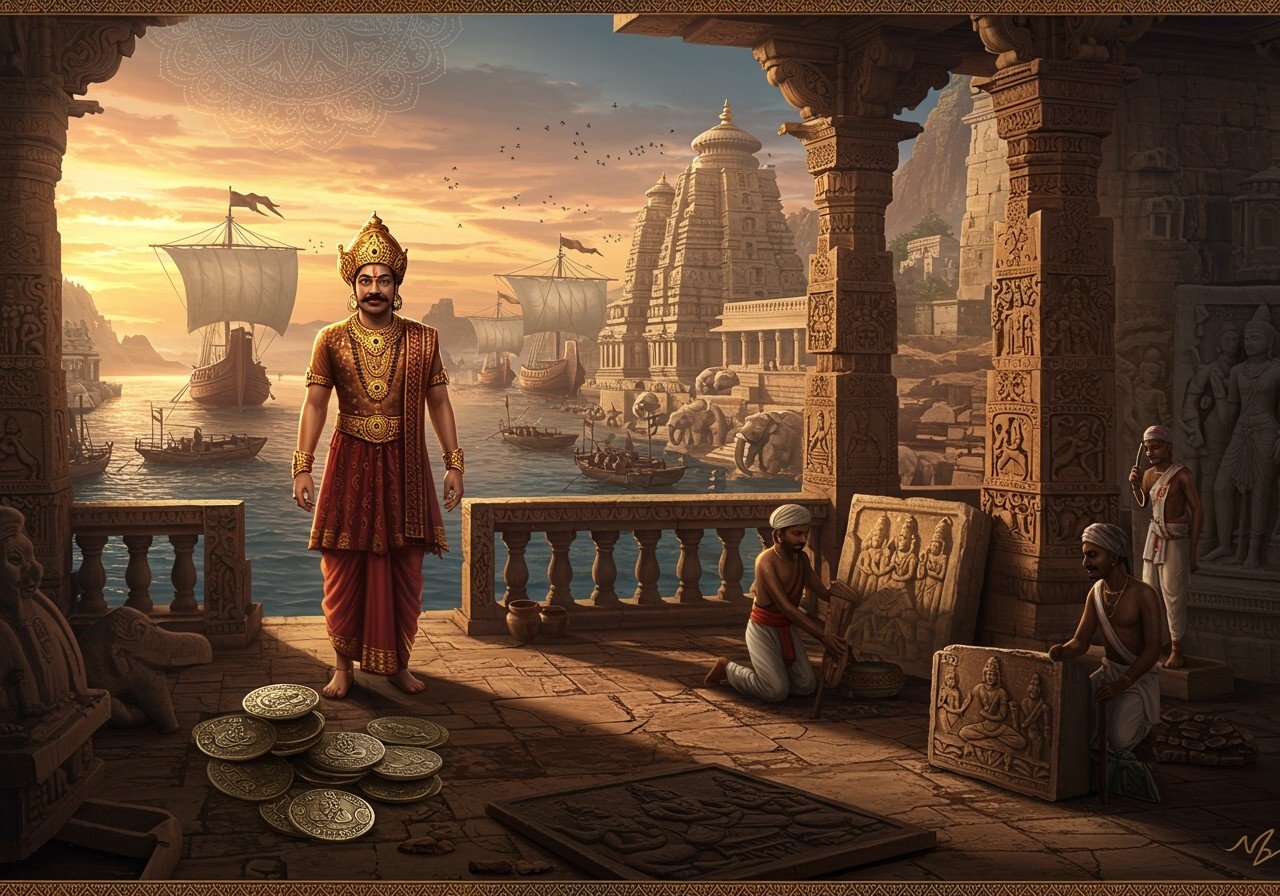
The Satavahana Dynasty, a prominent force in ancient India, left an indelible mark on the nation’s art, culture, and trade. Ruling for nearly four and a half centuries, from the late 2nd century BCE to the early 3rd century CE, they significantly shaped the cultural landscape of the Deccan and beyond.
Understanding the Satavahana Dynasty
Often referred to as the Andhras, the Satavahanas built the first Deccanese empire in southern India. With their capital at Pratishthan (present-day Paithan), their influence extended across vast regions of the Deccan, central India, and south India.
Known for their patronage of Buddhism, the Satavahanas fostered a flourishing period of art and architecture. The magnificent stupas, chaityas, and viharas at Amaravati and Sanchi stand as testaments to their architectural prowess. Their rule also saw the promotion of Prakrit language and literature, further enriching India’s cultural heritage.
Achievements and Contributions
The Satavahanas’ contributions extended across various spheres:
- Administration: They established a centralized administrative system with provincial governors, ensuring effective governance across their vast territories.
- Trade: The Satavahanas played a vital role in promoting trade, issuing coins inscribed with Prakrit and Sanskrit. Their trade routes connected India with distant lands, leading to a vibrant exchange of cultural and economic ideas. They even had trade relations with the Roman Empire.
- Architecture: Their architectural legacy includes the magnificent Buddhist stupas at Amaravati and Sanchi, showcasing intricate carvings and impressive scale.
- Culture: The Satavahanas were patrons of art and culture, encouraging the development of sculpture, painting, and literature. Their support for Buddhism led to the creation of numerous religious artworks.
Are you fascinated by the rich history of the Satavahana Dynasty and their magnificent temples? At poojn.in, we offer a wide selection of puja items, deities, and spiritual accessories that can help you connect with your heritage. Explore our collection today and bring a piece of history into your home.
Prominent Satavahana Rulers
Several notable rulers shaped the Satavahana dynasty:
- Simuka: The founder of the dynasty, Simuka laid the foundation for the Satavahana empire.
- Shatakarni I: Shatakarni I expanded the kingdom and performed the prestigious Ashvamedha sacrifice, signifying his imperial authority.
- Gautamiputra Satakarni: Considered the greatest of the Satavahana rulers, Gautamiputra Satakarni significantly expanded the empire’s boundaries after defeating the Shakas. His reign marked a golden age for the dynasty.
- Vashishtiputra Pulumavi: Vashishtiputra Pulumavi continued the dynasty’s expansion and oversaw a period of flourishing trade with the Roman Empire.
- Yajna Sri Satakarni: Yajna Sri Satakarni revived the dynasty’s power after a period of decline, solidifying their position in the Deccan.
The End of an Era and the Rise of New Powers
The decline of the Satavahana dynasty in the early 3rd century CE led to the rise of several regional powers:
- Western Kshatrapas (Shakas): The Western Kshatrapas, also known as the Shakas, gained prominence in the western regions of the former Satavahana empire.
- Ikshvakus: The Ikshvakus succeeded the Satavahanas in the eastern Deccan and Andhra regions, establishing their own kingdom.
Delve deeper into the fascinating world of ancient Indian dynasties. Discover more about their history and significance through our curated blog posts:
- Kandariya Mahadeva Temple
- Khajuraho and Kandariya Mahadeva
- Andhra Pradesh: A Journey Through Time
- Andhra Pradesh State Symbols
The Satavahana Legacy
The Satavahana Dynasty’s contributions to Indian history are undeniable. Their patronage of art, architecture, and trade left a lasting impact on the cultural landscape of the Deccan and beyond. Their legacy continues to inspire and inform our understanding of ancient India.


